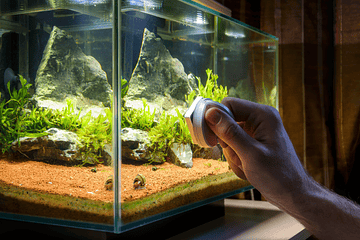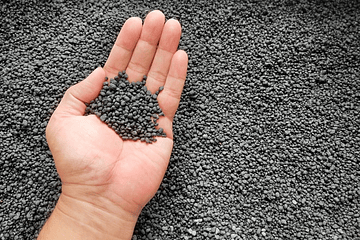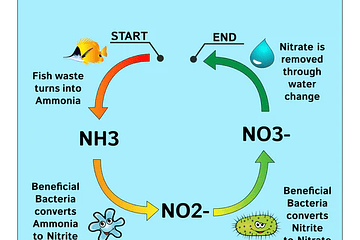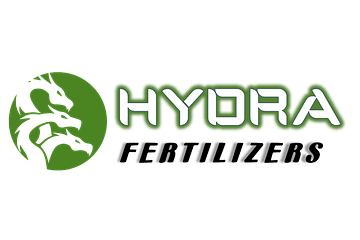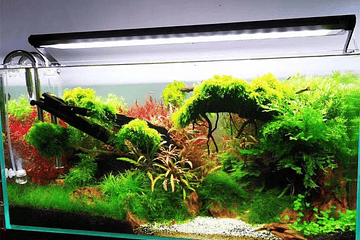Planted aquariums are truly living works of art, offering a naturally beautiful and healthy environment for both fish and aquatic plants. To achieve lush, healthy plant growth, it is essential to understand the importance of carbon dioxide (CO2) in the aquarium. In this article, we'll dive deep into the world of CO2 in planted aquariums, exploring advanced injection methods, necessary equipment, ideal concentrations, and additional tips to make your aquarium a botanical wonder.
The Importance of CO2 in Planted Aquariums:
CO2 is one of the main nutrients for aquatic plants, playing a crucial role in photosynthesis. During this process, plants convert light into energy, using CO2 to produce carbohydrates and oxygen.
By injecting CO2 into the aquarium, you will be providing an additional supply of this essential nutrient, increasing the rate of photosynthesis and promoting more vigorous plant growth.
Medium to demanding plants always needed additional CO2 to grow in size and density and to gain the redder colors found in some species.

source: https://aquaproshq.com/
Benefits of CO2 injection in Planted Aquariums:
Lush Plant Growth: Injecting CO2 into planted aquariums provides a significant increase in the growth rate of aquatic plants. With adequate CO2 levels, plants can produce more carbohydrates, which results in faster growth, dense foliage, and vibrant colors.
Algae Suppression: The presence of healthy, actively growing plants helps compete with algae for nutrients and light. By providing enough CO2 to plants, you are ensuring that they have a competitive advantage over algae, thus reducing their unwanted growth.
Improving Water Quality: Aquatic plants, by absorbing CO2, release oxygen into the aquarium, improving water quality for fish. Furthermore, CO2 stimulates the growth of a layer of biofilm on surfaces, which acts as an additional biological filter, helping to remove toxins and waste.
Ecological Balance: The presence of healthy plants in planted aquariums provides a more natural environment for fish, creating hiding places, spawning areas and allowing the maintenance of a stable ecological balance. Furthermore, plants help absorb nitrogenous compounds produced by fish, reducing the toxic load in the water.
Appearance of Rotala green in an aquarium WITHOUT and WITH CO2

CO2 Injection Methods:
There are different methods of injecting CO2 into planted aquariums, each with its advantages and disadvantages. Let's explore the two most popular methods:
Pressurized CO2 Injection System:
This method uses a pressurized CO2 cylinder, a pressure regulator, a solenoid valve and a diffuser. CO2 is released from the cylinder through the pressure regulator, controlling the amount injected. The solenoid valve allows you to program times for CO2 injection, saving gas at night. The diffuser, usually made of ceramic, dissolves CO2 in the water, maximizing its absorption by plants.
CO2 injection for fermentation:
This method uses a solution of water, sugar and yeast to produce CO2. The mixture is placed in a closed container, such as a PET bottle, with a tube connected to the aquarium. As the yeast ferments the sugar, CO2 is released and directed to the aquarium through the tube. Although it is a more economical option, CO2 production is less controllable and can be unstable.
Necessary equipments:
In addition to the basic components mentioned above, some additional equipment can further enhance the CO2 injection in your planted aquarium:
Bubble Counter: A device that allows you to control the amount of CO2 injected, counting the number of bubbles that pass through it. Generally 1 to 2 bubbles per second (bps) to start, but 5, 6 or more may be needed depending on the size of the aquarium, mass of plants and rate of CO2 evaporation from the water.
CO2 reactor (optional): A device that mixes CO2 with the aquarium water, increasing the efficiency of dissolving the gas.
CO2 Monitor / Drop Checker: A device that measures the concentration of CO2 in the aquarium, ensuring that levels are adequate for healthy plant growth.
The drop checker is the most common method, it has a reagent liquid that turns from blue to yellow due to the reaction with CO2, with blue being insufficient CO2, green being the ideal concentration and yellow being excess CO2 in the water.
Attention: The reaction between co2 and the reacting liquid has a delay of 2-3 hours, that is, the reacting liquid takes around 2-3 hours to change color when exposed to X concentration of co2 in the water.
When starting the injection for the first time or making adjustments, take this time into account to see the result in the drop checker.

Ideal CO2 Concentrations:
Ideal CO2 concentrations vary depending on the aquarium, plants and fish you have. Generally, recommended values are between 20 and 30 ppm (parts per million). This will represent the green color in the drop checker.
Advanced Tips:
Here are some advanced tips for optimizing CO2 injection in your planted aquarium:
Even Distribution: Use CO2 diffusers, reactors or atomizers to ensure even distribution throughout the aquarium.
Water Flow: Position CO2 diffusers in areas with good water flow, ensuring efficient gas dispersion.

Agitation on the water surface: Too much agitation on the water surface, whether through the filter outlet or by air pumps, increases the evaporation of CO2 dissolved in the water, making it difficult or even, in some cases, preventing it from reaching the ideal CO2 values in the water. water, so leave a slight ripple on the surface and turn off the air pump during the CO2 injection period.

Photoperiod: Adjust the CO2 injection according to the lighting intensity. Actively growing plants with high light intensity require a greater injection of CO2 to meet their demands.
Injection Time: Turn on the CO2 30 min to 1 hour before the lights turn on, so when the lights turn on the CO2 concentration in the water will be optimal for the plants to begin photosynthesis and consider turning off the CO2 injection 1 hour before turning off the lights of the aquarium. This helps avoid excessive CO2 levels at night, when plants are not photosynthesizing.
Automation: With automation, you can program the CO2 injection time, adjusting it according to the photoperiod, light intensity and specific needs of the aquarium. This makes CO2 maintenance more convenient and accurate. Currently it will make more sense to use a smartplug connected to your home WiFi, but it also has analogue and digital timers.
Gradual Introduction: When starting to inject CO2 into your aquarium, start at a low rate and gradually increase it over a few weeks. This allows the plants to adjust and prevents unnecessary stress.
Combination with Fertilizers: Consider using liquid fertilizers or nutrient substrates in conjunction with CO2 injection. This will ensure that plants have access to all the nutrients they need for healthy growth.
Of course, Hydra guarantees this contribution Hydra Fertilizers
Observation of Plants and Fish: Observe plants and fish regularly to detect any signs of stress or imbalance. If plants are growing very slowly or have yellowing leaves, it could be a sign of a lack of CO2 or another nutrient.
On the other hand, if the fish are showing signs of discomfort, such as rapid breathing or lethargy, it could be a sign of excess CO2.
Conclusion:
CO2 injection into planted aquariums plays a crucial role in the exuberant growth of plants and the establishment of a healthy aquatic ecosystem. By understanding the importance of CO2, choosing the appropriate injection method, purchasing the necessary equipment, and monitoring CO2 levels regularly, you will be on your way to creating a spectacular planted aquarium. Remember to follow the advanced tips to optimize CO2 injection and provide your aquatic plants with the ideal environment to flourish. With patience and dedication, you will be able to enjoy a stunning planted aquarium filled with green life and happy fish.













